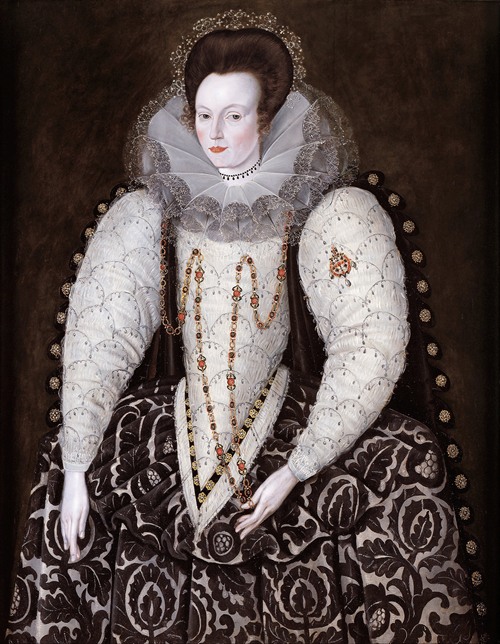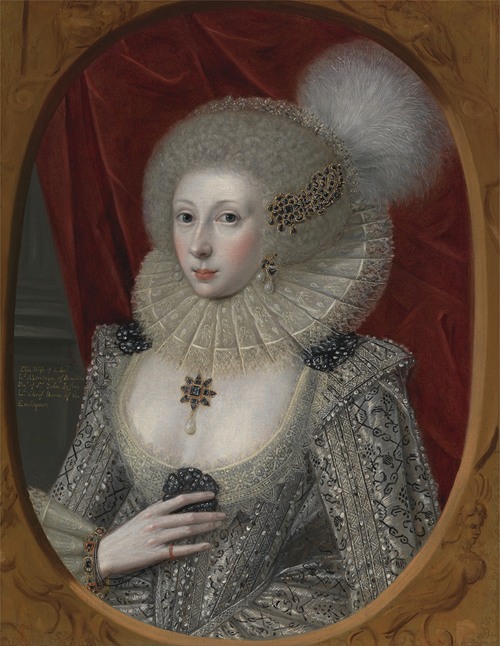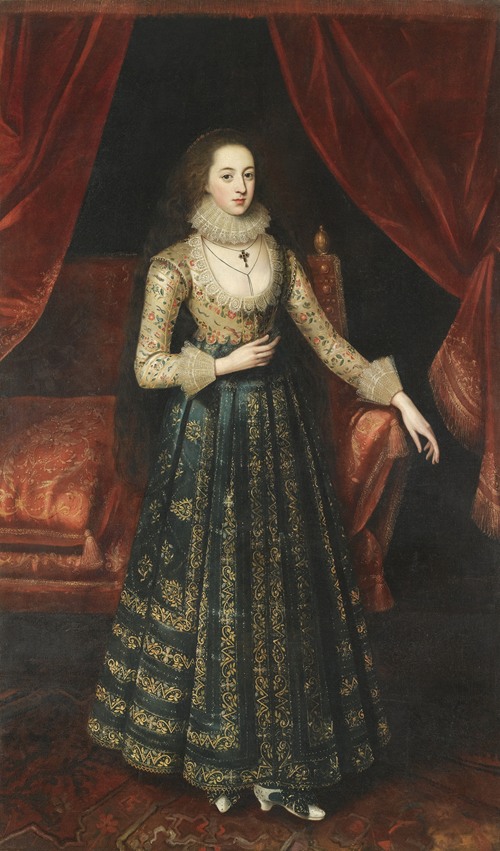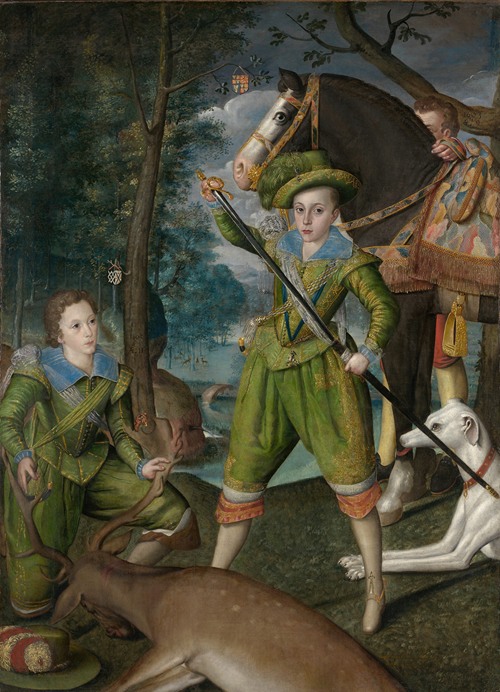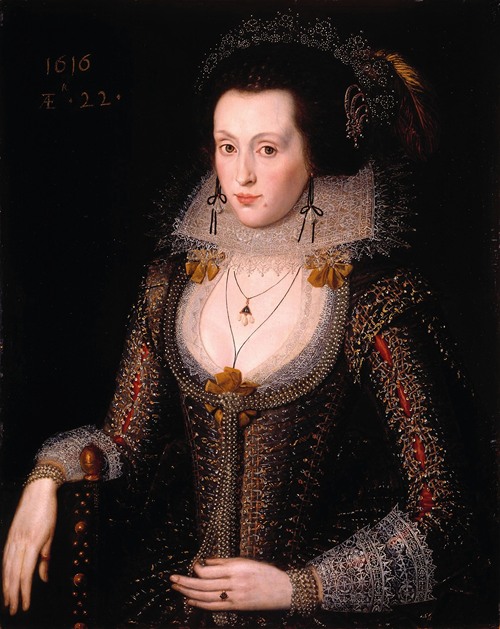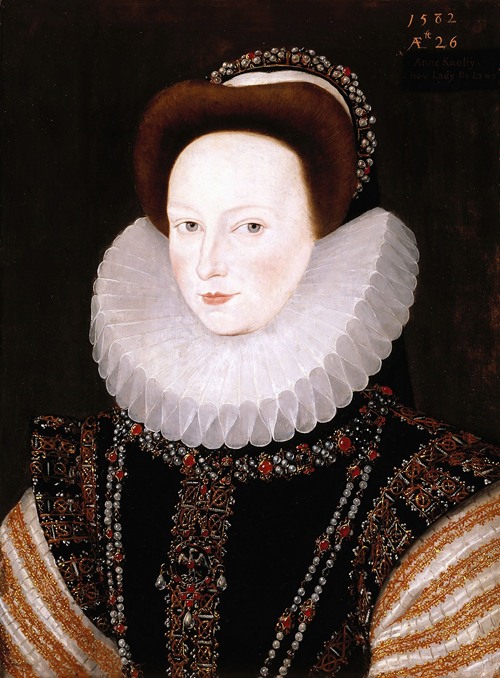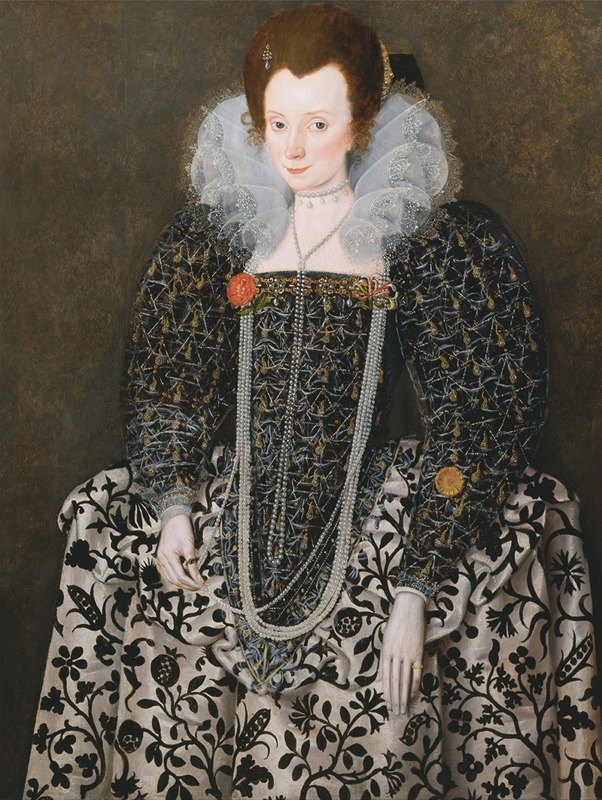
Robert Peake the Elder was an English painter active in the later part of Elizabeth I's reign and for most of the reign of James I. In 1604, he was appointed picture maker to the heir to the throne, Prince Henry; and in 1607, serjeant-painter to King James I – a post he shared with John De Critz. Peake is often called "the elder", to distinguish him from his son, the painter and print seller William Peake (c. 1580–1639) and from his grandson, Sir Robert Peake (c. 1605–67), who followed his father into the family print-selling business.
Peake was the only English-born painter of a group of four artists whose workshops were closely connected. The others were De Critz, Marcus Gheeraerts the Younger, and the miniature painter Isaac Oliver. Between 1590 and about 1625, they specialised in brilliantly coloured, full-length "costume pieces" that are unique to England at this time. It is not always possible to attribute authorship between Peake, De Critz, Gheeraerts and their assistants with certainty.
Peake was born to a Lincolnshire family in about 1551. He began his training on 30 April 1565 under Laurence Woodham, who lived at the sign of "The Key" in Goldsmith's Row, Westcheap. He was apprenticed, three years after the miniaturist Nicholas Hilliard, to the Goldsmiths’ Company in London. He became a freeman of the company on 20 May 1576. His son William later followed in his father's footsteps as a freeman of the Goldsmiths' Company and a portrait painter. Peake's training would have been similar to that of John de Critz and Marcus Gheeraerts the Younger, who may have been pupils of the Flemish artist Lucas de Heere.
Peake is first heard of professionally in 1576 in the pay of the Office of the Revels, the department that oversaw court festivities for Elizabeth I. When Peake began practising as a portrait painter is uncertain. According to art historian Roy Strong, he was "well established" in London by the late 1580s, with a "fashionable clientele". Payments made to him for portraits are recorded in the Rutland accounts at Belvoir in the 1590s. A signed portrait from 1593, known as the "Military Commander", shows Peake's early style. Other portraits have been grouped with it on the basis of similar lettering. Its three-quarter-length portrait format is typical of the time.
In 1607, after the death of Leonard Fryer, Peake was appointed serjeant-painter to King James I, sharing the office with John De Critz, who had held the post since 1603. The role entailed the painting of original portraits and their reproduction as new versions, to be given as gifts or sent to foreign courts, as well as the copying and restoring of portraits by other painters in the royal collection.
In addition to copying and restoring portraits, the serjeant-painters also undertook decorative tasks, such as the painting of banners and stage scenery. Parchment rolls of the Office of the Works record that De Critz oversaw the decorating of royal houses and palaces. Since Peake's work is not recorded there, it seems as if De Critz took responsibility for the more decorative tasks, while Peake continued his work as a royal portrait painter. However, Peake and Paul Isackson painted the cabins, carvings, and armorials on the ship the Prince Royal in 1611.
In 1610, Peake was described as "painter to Prince Henry", the sixteen-year-old prince who was gathering around him a significant cultural salon. Peake commissioned a translation of Books I-V of Sebastiano Serlio's Architettura, which he dedicated to the prince in 1611. Scholars have deduced from payments made to Peake that his position as painter to Prince Henry led to his appointment as serjeant-painter to the king. The payments were listed by the Prince's household officer Sir David Murray as disbursements from the Privy Purse to "Mr Peck". On 14 October 1608, Peake was paid £7 for "pictures made by His Highness’ command"; and on 14 July 1609, he was paid £3 "for a picture of His Highness which was given in exchange for the King’s picture". At about the same time, Isaac Oliver was paid £5.10s.0d. for each of three miniatures of the prince. Murray's accounts reveal, however, that the prince was paying more for tennis balls than for any picture.
Peake is also listed in Sir David Murray's accounts for the period between 1 October 1610 and 6 November 1612, drawn up to the day on which Henry, Prince of Wales, died, possibly of typhoid fever, at the age of eighteen: "To Mr Peake for pictures and frames £12; two great pictures of the Prince in arms at length sent beyond the seas £50; and to him for washing, scouring and dressing of pictures and making of frames £20.4s.0d". Peake is listed in the accounts for Henry's funeral under "Artificers and officers of the Works" as "Mr Peake the elder painter". For the occasion, he was allotted seven yards of mourning cloth, plus four for a servant. Also listed is "Mr Peake the younger painter", meaning Robert's son William, who was allotted four yards of mourning cloth.
After the prince's death, Peake moved on to the household of Henry's brother, Charles, Duke of York, the future Charles I of England. The accounts for 1616, which call Peake the prince's painter, record that he was paid £35 for "three several pictures of his Highness". On 10 July 1613, he was paid £13.6s.8d. by the vice-chancellor of the University of Cambridge, "in full satisfaction for Prince Charles his picture", for a full-length portrait which is still in the Cambridge University Library.
Peake died in 1619, probably in mid-October. Until relatively recently, it was believed that Peake died later. Erna Auerbach, Tudor Artists, London, 1954, p. 148, put his death at around 1625, for example. The catalogue for The Age of Charles I exhibition at the Tate Gallery in 1972, p. 89, suggested Peake was active as late as 1635. His will was made on 10 October 1619 and proved on the 16th. The date of his burial is unknown because the Great Fire of London later destroyed the registers of his parish church, St Sepulchre-without-Newgate. This was a time of several deaths in the artistic community. Nicholas Hilliard had died in January; Queen Anne, who had done so much to patronise the arts, in March; and the painter William Larkin, Peake's neighbour, in April or May. Though James I reigned until 1625, art historian Roy Strong considers that the year 1619 "can satisfactorily be accepted as the terminal date of Jacobean painting".
